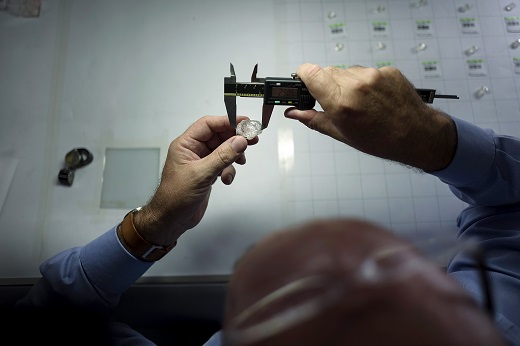|
|
De Beers Reveals Overhaul of Sight System
Mar 1, 2020 7:35 AM
By Joshua Freedman
|
|
|

RAPAPORT... De Beers plans to split sightholders into three categories and offer each group a more bespoke selection of rough diamonds as part of changes to its sales system.
Manufacturers, dealers and retailers will sign specific supply contracts designed for the “broad needs” of each business model, a De Beers spokesperson told Rapaport News Thursday.
The arrangement will take effect in January 2021, following the end of the current sightholder contract, which runs until December 2020. Applications start this week, giving companies four weeks to complete the process, a source in the rough market said on condition of anonymity.
The manufacturer contract will “support the core strengths” of each cutting firm, De Beers explained. Dealers — those that buy rough for resale — will receive a “regular and consistent range of goods,” especially in higher-volume areas. The retailer contract is tailored for companies that sell jewelry to consumers and also have polishing operations. Beneficiation contracts — for sightholders that commit to polishing certain goods in the country where they were mined — will remain as modified versions of the manufacturing contract.
“It is our ambition to offer supplies and services that can help to better support the unique strengths of the great businesses of the diamond midstream, and we feel this approach is the optimal way of achieving this,” the spokesperson said.
The company has long been contemplating changes to its sightholder system amid difficult conditions in the manufacturing and trading sectors, such as tight liquidity and an inventory imbalance. Its supply rules — based on a method known as “demonstrated demand” — have also faced criticism.
Under that system, De Beers mainly determines clients’ rough supply using their purchasing record — a controversial policy because it can encourage sightholders to take on unprofitable inventory to secure future access to its goods. It offers the diamonds in prearranged boxes that customers either take or leave, with only limited flexibility to adjust the contents. That sometimes forces sightholders to buy items they don’t want just so they can get the stones they need.
The current method has come under particular scrutiny given the excess polished in the market last year, which contributed to a slump in rough demand. Last July, Dutch bank ABN Amro urged its clients to stop buying unprofitable rough, and attacked the practice of making purchases purely to maintain supply allocations.
De Beers’ revenue fell 24% to $4.61 billion in 2019, while underlying earnings slid 87% to $45 million, as the supply glut left sightholders unwilling to buy more rough. The situation forced the miner to allow unprecedented refusals and other concessions to avoid flooding the market with goods.
The “need for us to adapt to the changing world” has been the subject of talks between De Beers and sightholders for a while, the company spokesperson added.
“This new approach to sightholder contracts is one way we are going about this,” he noted.
Image: Steve Millan, a sorter at De Beers’ DTC Botswana operation, measures the size of a rough diamond with a micrometer. (De Beers)
|
|
|
|
|
|
|
|
|
|
Tags:
De Beers, Joshua Freedman, mining, Rapaport News, rough, Rough Diamonds, rough market, rough sales, Sightholders, Sights
|
|
|
|
|
|
|
|
|
|
|

|
|